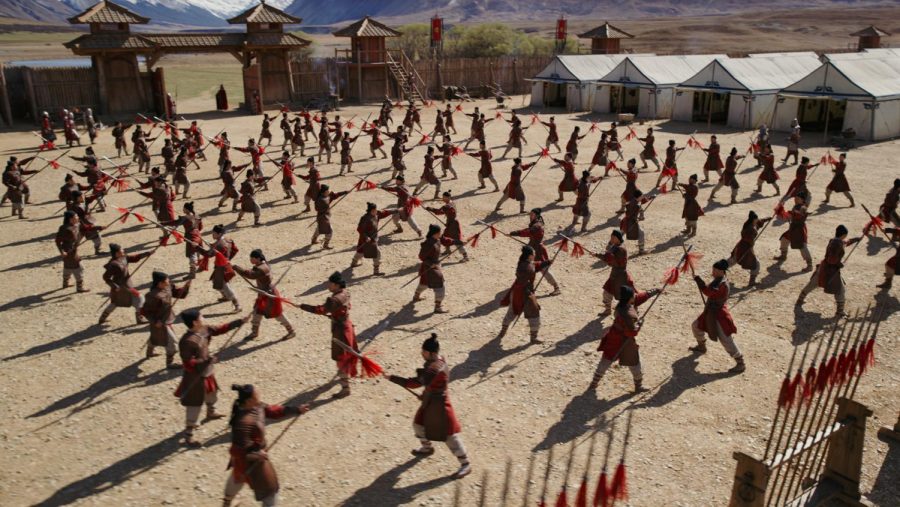Mulan, Take Two: A Review of The Live-Action Remake
Despite the song “Make a Man Out of You” being cut from the live-action adaptation, the scene itself was still a part of the film.
September 23, 2020
Disney’s highly anticipated adaptation of the legend of Mulan was released September 4 of this year to users of Disney+ with premium access, and has big shoes to fill after Disney’s 1998 animated Mulan film, which won several Annie Awards, including Best Animated Feature.
Disappointing many fans months before the release, it was disclosed that this rendition would not include Mushu, who was a beloved comic relief in the 1998 version of Mulan. In addition to losing him, iconic songs, including “Make a Man Out of You” and “Reflection,” were also not included.
While those beloved aspects are missing in the new film, these changes might also be seen as positive adjustments. Taking out an iconic part from the animated film gives the remake independence from its original.
Usually, I don’t enjoy remakes of Disney princess movies because they add nothing to the story, as was the case when they remade “Cinderella” and “Beauty and the Beast” as live actions. But by starting fresh with this live-action version of Mulan, you can watch it without feeling déjà vu every five seconds.
No one wants to hear the same story told the same way a hundred times ー but adding a new twist can catch the audience’s attention.
2020’s Mulan is very different from the one released in 1998, yet is closer to the earliest written version, Ballad of Mulan, which was likely from around 400 AD during the era of Northern Wei. Before this was written it is presumed that the story of Mulan began as an oral tradition.
In the original poem, a young girl takes her father’s place in war just as she does in both Disney features. However, unlike in the animated movie, Mulan is not discovered to be a woman until after returning home from the war.
Meanwhile, this year’s release goes separately from both the animated film and the original poem. Rather than have Mulan’s true identity uncovered by accident, or having her make it through the whole war without being discovered until she returns home, the live-action has the heroine reveal herself to be a woman during battle.
Over the years, there have been retellings of the story of Mulan a multitude of times, all inspired from the story of a girl sacrificing herself for her father.
A personal favorite of mine is “Spin the Dawn” by Elizabeth Lim. Both this book and the new movie have a sorcerer capable of turning into a hawk. However, the main difference between the two is that the witch from Mulan acts on her own free will, whereas the book’s wizard has their powers bound to an amulet.
Another difference between the two is why the sorcerer chose to be a villain.
In “Spin the Dawn,” the sorcerer of the story wants to help the heroine from the beginning of the tale, but is prevented by the amulet that has taken control of him. Having something like this that regulates the sorcerer’s powers makes his character more believable, and adds more depth as to why he serves evil.
In contrast, the movie’s witch serves the side of evil because no one else would accept her. They don’t give any further explanation other than a vague summary of her village kicking her out for being a strong woman.
Because of the lack of detail in the backstory, the witch in the movie had a lot of potential that wasn’t used. For example, when she sees Mulan leading the army to save the emperor, she switches to her side without hesitation, which doesn’t make any sense seeing as she is supposedly evil.
If the witch in Mulan was controlled by an amulet as the sorcerer in the book was, she would have a more concrete reason to side with Mulan in the end.
Overall, the 2020 live-action remake of Mulan surpassed previous live-action remakes by Disney, yet didn’t come close to its full potential.





